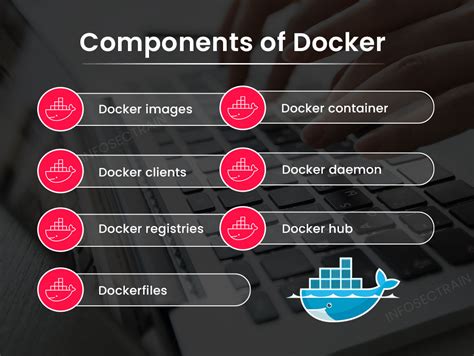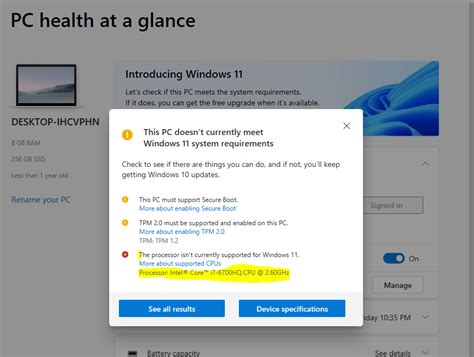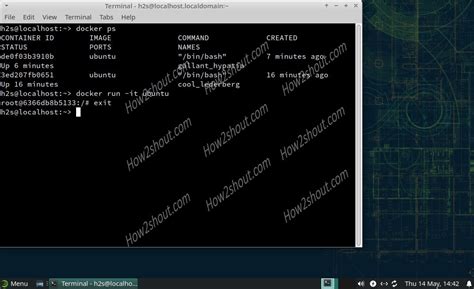Are you looking to optimize your system's resource utilization and enhance application deployment efficiency? Look no further. In this comprehensive guide, we will walk you through the step-by-step process of setting up containerization technology on your openSUSE system. By leveraging the power of modern containerization tools, you will be able to easily package, distribute, and deploy your applications, regardless of their complexity.
Boost Your Productivity with Containerization
Containerization has gained immense popularity in the world of software development and deployment in recent years. By isolating applications and their dependencies into lightweight, portable containers, developers can focus on building and iterating their software, free from compatibility concerns. With the proliferation of containerization toolkits available, it is now easier than ever to adopt this technology and reap its numerous benefits.
Streamline Your Workflow with Docker, the Leading Containerization Solution
Among the variety of containerization tools available, Docker stands out as the industry standard, providing a user-friendly interface and a rich ecosystem for managing containerized applications. With Docker's robust feature set, you will have the ability to create, deploy, and scale applications with ease. This guide will focus on installing Docker on your openSUSE Linux system, as well as configuring the necessary components to get you up and running in no time.
Understanding Docker and Its Benefits

In this section, we will explore the concept and advantages of Docker, a powerful platform for containerization. By leveraging Docker, users can easily package their applications and dependencies into portable containers, eliminating compatibility issues across operating systems and environments.
Docker provides a lightweight and efficient solution for running applications in isolated environments. These containers encapsulate everything required to run an application, including the code, system tools, libraries, and runtime. Containers are isolated from one another and from the underlying host system, ensuring that each application runs consistently regardless of its environment.
One key benefit of Docker is its scalability. With Docker, developers can quickly and easily scale applications to accommodate varying workload demands. Docker containers are highly portable and can be moved seamlessly between different environments, providing flexibility and agility in application deployment.
Another advantage of Docker is its efficient resource utilization. Containers share the host system's operating system kernel, allowing multiple containers to run concurrently without the need for dedicated virtual machines. This results in improved resource efficiency and reduced overhead compared to traditional virtualization methods.
Docker also simplifies the process of application deployment and management. With Docker, developers can define their application's configuration and dependencies in a Dockerfile, which can then be used to build consistent and reproducible containers. This streamlines the deployment process, reduces errors, and facilitates collaboration between development and operations teams.
In summary, Docker is a powerful platform that revolutionizes the way applications are packaged, deployed, and managed. Its benefits include simplified application deployment, improved scalability, efficient resource utilization, and enhanced collaboration between development and operations teams.
| Benefits of Docker |
|---|
| Portability across operating systems and environments |
| Scalability to handle varying workload demands |
| Efficient resource utilization with shared kernel |
| Simplified application deployment and management |
| Enhanced collaboration between development and operations teams |
Prerequisites
In order to successfully proceed with the installation of Docker on your openSUSE Linux system, there are certain requirements that you need to fulfill. These prerequisites ensure that your system is properly prepared for the installation process.
The first requirement is to have a compatible version of openSUSE Linux installed on your machine. Make sure that your operating system is up to date and meets the necessary system requirements for Docker.
Additionally, you will need to have administrative privileges on your openSUSE Linux system. This will allow you to install software packages and make necessary modifications to the system.
Another prerequisite is having a stable internet connection. Docker relies on internet connectivity to download necessary dependencies and container images. Ensure that your connection is reliable and capable of handling large downloads.
Furthermore, it is important to have a basic understanding of the command line interface (CLI) of openSUSE Linux. You will need to execute commands and navigate through the terminal to install and manage Docker.
Lastly, ensure that your machine meets the hardware requirements for Docker. These specifications may vary depending on the specific use cases and workload demands of your containers. Refer to the official Docker documentation for detailed hardware requirements.
| Prerequisites: |
| - Compatible version of openSUSE Linux |
| - Administrative privileges |
| - Stable internet connection |
| - Basic command line interface (CLI) knowledge |
| - Adequate hardware specifications |
System Requirements for Successful Installation

Before proceeding with the installation process, it is important to check whether your system meets the necessary requirements. Ensuring that your system meets the minimum specifications guarantees a smooth and successful installation of Docker on your openSUSE Linux system without any compatibility issues.
To begin, it is crucial to verify that your system has the appropriate hardware requirements. This includes a compatible processor with sufficient processing power, memory (RAM) capacity, and available storage space. Furthermore, it is essential to have a stable internet connection to download and install Docker packages and dependencies.
Additionally, it is recommended to have a supported and up-to-date operating system version on your openSUSE Linux machine to ensure the best possible experience and avoid any potential conflicts during installation. Having the necessary system updates and patches installed can greatly improve compatibility and performance.
Furthermore, it is advised to have administrative privileges or root access on your system, as Docker requires certain permissions to install and run successfully. This ensures that you have the necessary permissions to execute the necessary commands and modify system configurations as needed.
Lastly, it is important to check the version of your Linux kernel, as Docker requires a minimum kernel version for compatibility. Ensuring that your kernel is up to date or installing the required version can prevent any potential issues during the installation process.
By verifying and meeting these system requirements, you can ensure a smooth installation of Docker on your openSUSE Linux system, enabling you to leverage the powerful containerization capabilities and benefit from the wide range of features that Docker provides.
Installation
Getting started with Docker on openSUSE Linux
Ready to dive into the world of containerization on your openSUSE Linux system? This guide will walk you through the step-by-step process of installing Docker, a powerful and versatile platform for running and managing containers.
Discover the simplicity and efficiency of containerized applications through Docker's innovative technology.
Whether you are a seasoned developer or a Linux enthusiast eager to explore new possibilities, this installation guide will equip you with the knowledge and tools needed to embark on your Docker journey. By the end of this process, you will be ready to leverage Docker's capabilities to create, deploy, and manage your very own containers.
Downloading and Installing Docker on openSUSE Linux

In this section, we will guide you through the process of acquiring and setting up Docker on your openSUSE Linux system.
To get started, you will need to download the necessary files and packages for Docker. These files contain the essential components required to install and run Docker on your openSUSE Linux distribution. After obtaining the files, you can proceed with the installation process by following the step-by-step instructions provided below.
Please note that Docker is a powerful containerization platform that enables developers and system administrators to create, deploy, and manage applications and services using lightweight, isolated containers. It offers an efficient and reliable way to package and distribute software, making it easier to maintain and deploy applications across multiple environments.
To begin, you can visit the official Docker website or use the package management system of your openSUSE Linux distribution to download the necessary files. The Docker website provides comprehensive documentation and resources to help you get started, including instructions specific to openSUSE Linux.
Once you have obtained the files, you can proceed with the installation process. This typically involves running a series of commands to set up the Docker package, configuring the necessary dependencies, and enabling Docker to start automatically upon system boot.
After the installation is complete, you can verify the successful installation of Docker by running some basic commands. These commands will help you confirm that Docker is functioning correctly and that you can begin using Docker containers to deploy and manage your applications.
To summarize, this section will walk you through the process of acquiring the necessary Docker files and installing Docker on your openSUSE Linux system. By following the step-by-step instructions, you will be able to set up Docker and start utilizing its containerization capabilities to enhance your software development and deployment workflow.
| Key Points |
|---|
| - Docker is a containerization platform that simplifies the packaging and distribution of software. |
| - Download the necessary Docker files either from the official website or via the package management system of your openSUSE Linux distribution. |
| - Follow the installation instructions provided to configure Docker and its dependencies on your system. |
| - Verify the successful installation of Docker by running some basic commands. |
| - Once installed, Docker enables you to deploy and manage applications using lightweight, isolated containers. |
Configuration
Once you have successfully set up Docker on your openSUSE Linux system, it is important to properly configure it to ensure optimal performance and usability. In this section, we will discuss various configuration options and settings that can enhance your Docker experience.
- Network Configuration: Docker provides several network options for container communication and connectivity. You can configure network bridges, create custom networks, or utilize host mode to establish the desired network environment for your containers.
- Storage Configuration: Docker offers various storage options for managing container data. You can configure Docker to use different storage drivers, such as aufs, overlay2, or btrfs, depending on your specific requirements.
- Security Configuration: Docker provides several security features to protect your containers and the host system. You can configure user namespaces, enable AppArmor or SELinux profiles, and implement other security measures to ensure the isolation and integrity of your containers.
- Resource Configuration: Docker allows you to control and allocate system resources to individual containers. You can configure CPU, memory, and I/O limits for containers to optimize resource utilization and prevent resource contention.
- Logging and Monitoring Configuration: Docker provides logging and monitoring capabilities to track and analyze container activities. You can configure logging drivers, set up monitoring tools, and integrate with external logging and monitoring solutions to gain insights into container performance and behavior.
By carefully configuring Docker according to your specific needs and preferences, you can unlock the full potential of this powerful containerization technology. The above options and settings form a foundation for tailoring Docker to your unique requirements, making it an indispensable tool for efficient application deployment and management.
Configuring Docker for Enhanced Performance and Security

In this section, we will explore various techniques to optimize the performance and security of Docker on your openSUSE Linux system. By implementing these configurations, you can ensure that your Docker environment operates efficiently and securely, providing a reliable platform for running your containers.
Performance Optimization:
1. Tuning Resource Allocation: Fine-tune the resource allocation for your Docker containers by adjusting CPU and memory limits. This ensures that each container receives the appropriate amount of resources without impacting the overall system performance.
2. Implementing Caching Strategies: Utilize caching mechanisms to store frequently accessed data. This reduces the time-consuming process of retrieving data from external sources, improving the response time of your Docker applications.
3. Utilizing Load Balancing: Distribute incoming traffic across multiple Docker containers to avoid overloading a single instance. Load balancing helps optimize the performance of your entire Docker environment by efficiently handling incoming requests.
Security Enhancements:
1. Implementing Container Isolation: Utilize container isolation techniques such as namespace and cgroups to enhance the security of your Docker environment. This prevents containers from accessing resources or making changes outside their allocated space.
2. Securing Container Images: Regularly update and scan container images for vulnerabilities. By ensuring that only secure and trusted images are used, you minimize the risk of potential security breaches within your Docker environment.
3. Enforcing Access Control: Implement strict access controls to restrict unauthorized access to Docker resources. User authentication, role-based access controls, and network segmentation help prevent unauthorized users from compromising your Docker environment.
By applying these performance and security configurations, you can optimize your Docker setup on openSUSE Linux, ensuring a stable and secure environment for running your containers.
Verifying the Setup
Once you have successfully completed the installation process for the Docker platform on your openSUSE Linux system, it is important to ensure that the installation was carried out correctly. This can be done by performing a series of tests to verify the setup.
Start by running a simple command to check the Docker version and confirm that it is correctly installed on your system. Open the terminal and enter the command docker --version. If the installation was successful, the output should display the version number of the Docker platform.
Next, it is crucial to test the functionality of Docker by running a basic Docker command. Execute the command docker run hello-world in the terminal. This command downloads a test image and runs a container based on that image. If Docker is functioning properly, you should see a message confirming the successful execution of the command.
In addition to the basic tests, it is recommended to explore more advanced Docker functionalities to ensure a comprehensive evaluation of the installation. This includes creating and running custom containers, pulling images from the Docker Hub, and executing more complex commands.
By conducting these tests and experimenting with different Docker commands, you can gain confidence in the successful installation and functionality of Docker on your openSUSE Linux system. This will enable you to proceed with utilizing Docker and leveraging its advantages for your software development and deployment needs.
FAQ
What is Docker?
Docker is an open-source platform that allows developers to automate the deployment and scaling of applications using containers. Containers are lightweight and portable, allowing applications to run on any platform without worrying about compatibility issues.
Why should I use Docker on openSUSE Linux?
Docker provides a reliable and efficient way to deploy and manage applications on openSUSE Linux. It provides isolation for application processes and ensures consistent behavior across different environments. Additionally, Docker enables easy collaboration and sharing of application containers with other developers, making the development process more streamlined and efficient.
Can I use Docker on openSUSE Linux for production environments?
Yes, Docker can be used in production environments on openSUSE Linux. However, it is important to ensure that your system meets the necessary hardware requirements and that you have a good understanding of Docker best practices for security and performance. It is also recommended to test your application thoroughly in a staging environment before deploying it to a production environment using Docker.
What is Docker?
Docker is an open-source platform that allows you to automate the deployment, scaling, and management of applications using containerization.




